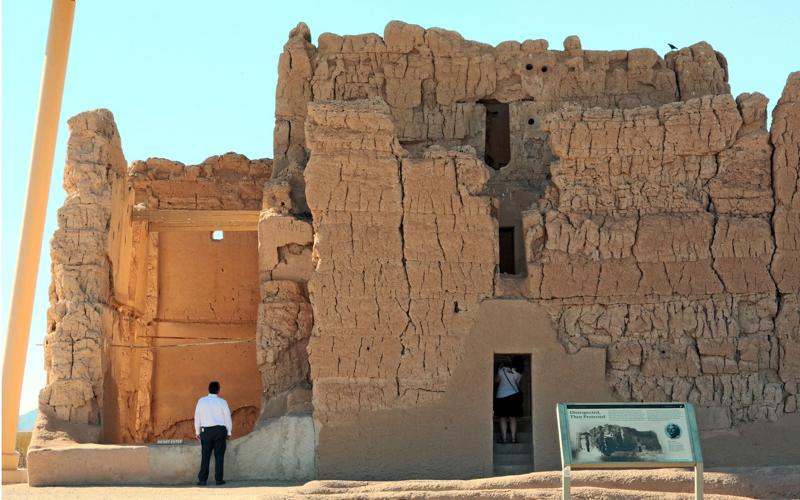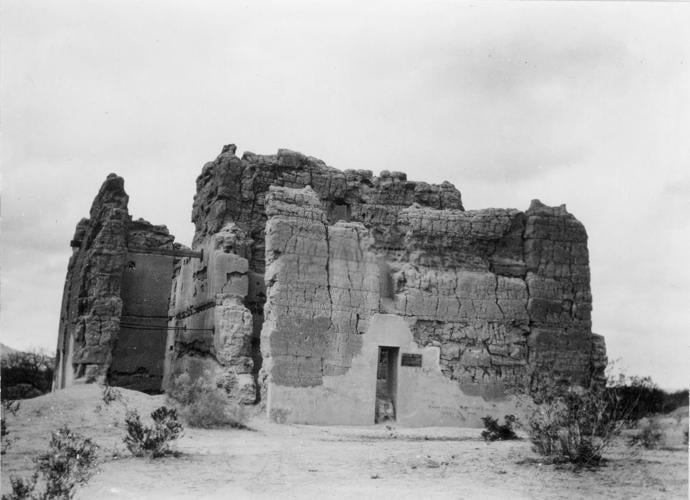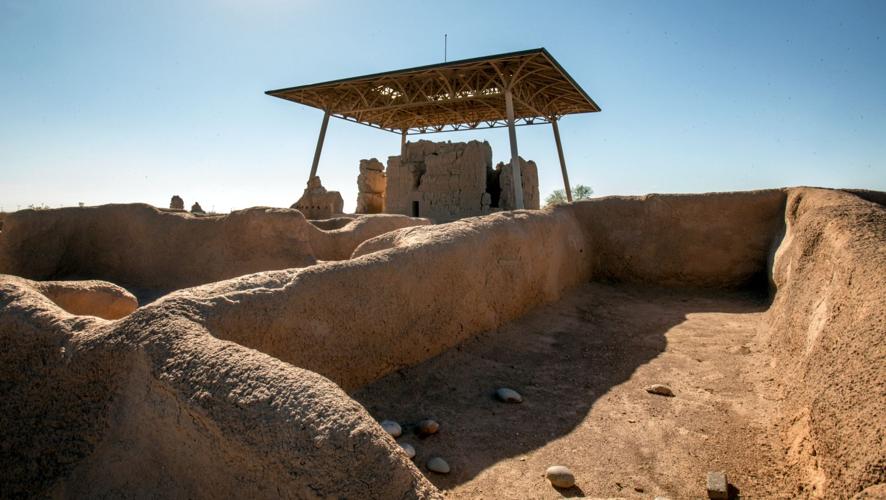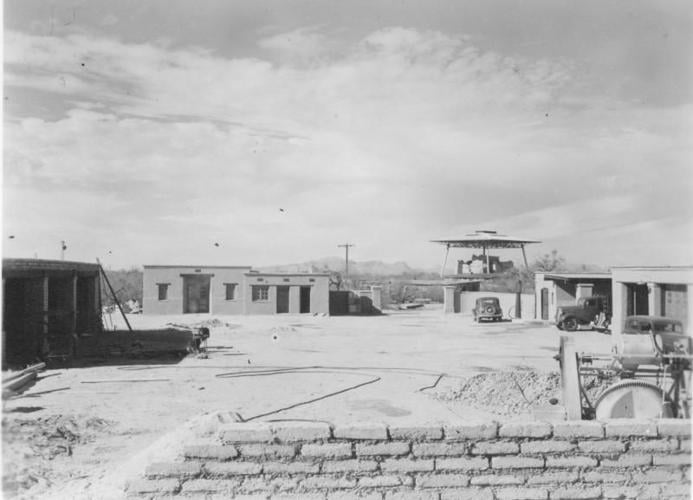The main building at Casa Grande Ruins National Monument near Coolidge is showing some serious wear, but here’s the thing: It’s still standing nearly seven centuries after ancient Indians built it of packed desert soil known as caliche.
To put that in perspective: Will your house still be standing in the year 2700?
An imposing structure standing four stories high, the Casa Grande — meaning “big house” or “great house”— dates to roughly A.D. 1350. Flanked by smaller ruins, it’s now protected by a metal roof.
“One of the largest prehistoric structures ever built in North America, its purpose remains a mystery,” says the monument’s website. “Archaeologists have discovered evidence that the ancient Sonoran Desert people who built the Casa Grande also developed wide-scale irrigation farming and extensive trade connections which lasted over a thousand years until about 1450.”
Dave Carney, chief of interpretation and education at the monument, observes that “Like many national park sites, Casa Grande Ruins is one of those places that can make you feel small. When you stand next to the Great House, and you realize that the building is one of the only tangible objects that speak of the ancestral desert peoples who existed here then, it makes you realize how small a space you take up in history.
“It is places like these that make us question the stresses portrayed on the nightly news, or the worry we have about our jobs or paying the bills as we check our email on our cellphones,” Carney says. “Yet the building itself is a testament to the technology of the time since the four-story building made of earth still stands.”
BUILT TO LAST
Builders of the Casa Grande used nearly 3,000 tons of caliche — a natural concrete-like material of sand, clay and calcium carbonate that’s found under the topsoil of the region.
The walls of the building are 4 feet thick at the base, with juniper and fir tree timbers forming internal support for the structure. The ancient Indians apparently obtained the trees from forests as far as 60 miles away.
The unusual height and design of the building served specific purposes, according to a National Park Service document.
“Archaeologists hypothesize that the structure’s height was necessary to help regional farmers observe areas that needed canal maintenance and water regulation,” says the document. “Also, due to Casa Grande’s positioning to the four cardinal points of the compass and its specific holes and openings that allow for celestial observation, archaeologists believe that the structure was used to observe the changing positions of celestial objects in order to organize planting, harvests, and celebrations.”
The site was abandoned sometime around 1450 for reasons still unknown.
GET TO CASA GRANDE
To reach the monument from Tucson, drive northwest on Interstate 10 for about 50 miles and take the exit for Arizona 87. Follow Arizona 87 north about 20 miles to the marked monument site north of Coolidge.
A $5 entrance fee is charged for visitors 16 or older. Those 15 or younger get in free.
Contact reporter Doug Kreutz at dkreutz@tucson.com or at 573-4192. On Twitter: @DouglasKreutz









